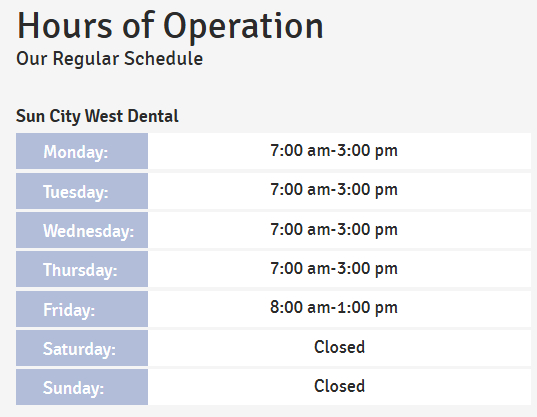Anxiety disorders are among the most common mental health conditions, affecting approximately 40 million adults in the United States, according to the Anxiety and Depression Association of America (ADAA). Medications such as Valium (diazepam) and Xanax (alprazolam) are often prescribed to manage anxiety symptoms. Both belong to the benzodiazepine class of drugs, which work by enhancing the effects of gamma-aminobutyric acid (GABA), a neurotransmitter that slows brain activity and induces relaxation.
While both Valium and Xanax are effective in treating anxiety, they differ in several key aspects, including their onset of action, duration, side effects, and risk of dependence. This article provides an in-depth comparison of Valium and Xanax, helping individuals and healthcare professionals understand which might be the better option for anxiety treatment.
What Are Valium and Xanax?
Valium and Xanax are both benzodiazepines, a class of medications commonly prescribed for anxiety, panic disorders, muscle spasms, and seizures. Despite their similarities, they have different pharmacological properties that impact their effectiveness and potential side effects.
- Valium (Diazepam): Originally approved by the FDA in 1963, Valium has a longer half-life and stays in the system for an extended period. It is often used to manage generalized anxiety disorder (GAD), muscle spasms, and alcohol withdrawal symptoms.
- Xanax (Alprazolam): Approved in 1981, Xanax is a shorter-acting benzodiazepine that provides rapid relief for panic attacks and acute anxiety episodes. Due to its quick onset, it is one of the most commonly prescribed benzodiazepines for anxiety disorders.
How Do They Work?
Both Valium and Xanax work by increasing the activity of GABA, a neurotransmitter responsible for reducing excitability in the brain. This results in a calming effect, which can help relieve symptoms of anxiety, restlessness, and panic.
- Valium: Acts within 30 to 60 minutes and has a half-life of 20 to 70 hours, meaning it stays in the body for a longer duration.
- Xanax: Acts much faster, within 15 to 30 minutes, but has a shorter half-life of 11 to 15 hours.
Because of these differences, Xanax is better suited for immediate anxiety relief, whereas Valium may be preferred for long-term anxiety management or conditions requiring longer-lasting effects.
Comparison: Valium vs. Xanax
| Feature | Valium (Diazepam) | Xanax (Alprazolam) |
| Onset of Action | 30 to 60 minutes | 15 to 30 minutes |
| Duration of Effect | Up to 24 hours | 4 to 6 hours |
| Half-Life | 20 to 70 hours | 11 to 15 hours |
| Common Uses | Anxiety, muscle spasms, seizures | Anxiety, panic disorders |
| Risk of Dependence | Moderate | Higher due to rapid effects |
| Withdrawal Severity | Moderate | High |
| Controlled Substance Schedule | Schedule IV | Schedule IV |
Efficacy for Anxiety Treatment
A study published in the Journal of Clinical Psychiatry found that benzodiazepines, including Valium and Xanax, are effective for short-term anxiety relief. However, long-term use of benzodiazepines can lead to tolerance, dependence, and withdrawal symptoms.
- Xanax is particularly effective for panic attacks due to its fast-acting nature. It can provide almost immediate relief, making it the preferred choice for individuals experiencing sudden, intense anxiety episodes.
- Valium, on the other hand, provides a longer-lasting calming effect, making it a better choice for individuals with generalized anxiety disorder (GAD) or those who require continuous symptom management.
Side Effects
While both medications are effective, they come with potential side effects.
Common Side Effects
- Drowsiness
- Dizziness
- Fatigue
- Memory impairment
- Confusion
Serious Risks
- Dependence and addiction: Both drugs have the potential for abuse, especially Xanax, due to its rapid onset of action.
- Tolerance: Over time, the body may require higher doses to achieve the same effect.
- Withdrawal symptoms: Discontinuing either medication suddenly can result in withdrawal symptoms, including insomnia, increased anxiety, seizures, and, in severe cases, life-threatening complications.
Factors Influencing the Choice Between Valium and Xanax
Doctors consider several factors when prescribing either Valium or Xanax for anxiety treatment:
1. Nature of Anxiety Symptoms
- If a patient experiences frequent panic attacks, Xanax is often preferred due to its fast-acting relief.
- If a patient has chronic anxiety, Valium may be the better option as it provides longer-lasting effects with fewer doses throughout the day.
2. Duration of Treatment
- Short-term use: Xanax is effective for immediate relief but is not ideal for prolonged use due to its high potential for dependence.
- Long-term management: Valium’s longer half-life makes it a more stable choice for extended anxiety treatment.
3. Risk of Dependence and Withdrawal
- Xanax carries a higher risk of dependence because it is fast-acting and short-lived, which may lead to increased use and potential addiction.
- Valium has a lower risk of severe withdrawal symptoms compared to Xanax but still poses a dependency risk when used long-term.
4. Individual Patient History
- Patients with a history of substance abuse may not be good candidates for either medication due to the risk of addiction.
- Elderly patients or those with liver impairment may process Valium more slowly, increasing the risk of accumulation and sedation.
Alternatives to Benzodiazepines
Due to the risks associated with benzodiazepines, doctors may consider alternative anxiety treatments, including:
- Selective Serotonin Reuptake Inhibitors (SSRIs): Medications like Prozac, Zoloft, and Lexapro are often used for long-term anxiety management.
- Cognitive Behavioral Therapy (CBT): A proven, non-medication approach to managing anxiety symptoms.
- Lifestyle Changes: Regular exercise, mindfulness, and stress management techniques can significantly reduce anxiety levels.
Final Thoughts: Which is Better for Anxiety?
Both Valium and Xanax are effective for treating anxiety, but the best choice depends on the individual’s needs:
- Xanax is ideal for fast-acting relief of acute anxiety and panic attacks but has a higher risk of dependence.
- Valium is better suited for long-term anxiety management, providing steady relief with a lower risk of severe withdrawal symptoms.
- Ativan vs Xanax for Anxiety
- Can Dehydration Cause Anxiety?
- Can You Take Xanax and Tramadol Together?
Ultimately, the decision should be made in consultation with a healthcare professional. While benzodiazepines can be helpful in managing anxiety, they should be used cautiously and for short-term relief when possible.


